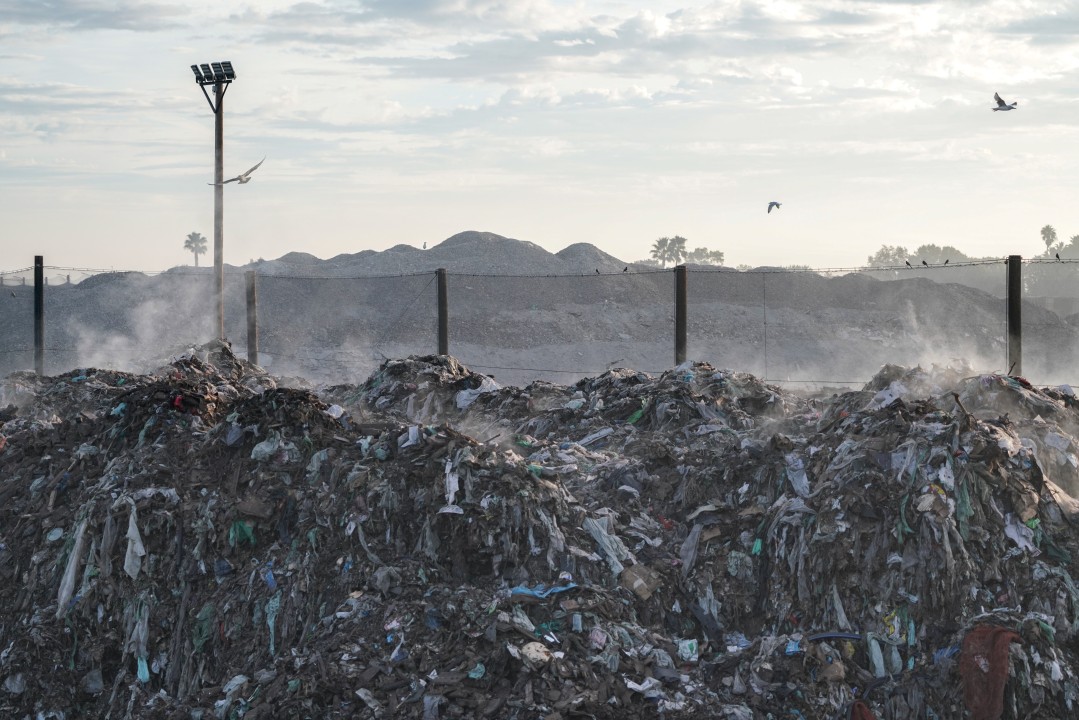Consider the “old” ways that people recycled clothing: siblings passed along hand-me-downs as they grew up, tailors resized garments when customers gained or lost weight, women repurposed fabric when sewing new outfits, and charitable organizations held rummage sales that circulated wardrobes around local communities. Growing up, I personally enjoyed hand-me-downs from my older brother, despite the fact that he was (and still is) six inches taller than me.
When people try to recycle clothing today, they aspire towards such local and sustainable practices: they donate bundles of clothes to charitable organizations like Salvation Army or GoodWill, they sell garments to neighborhood thrift stores, or they send clothes to companies that promise to recycle the fabrics. These modern practices appear to mimic the historical model of clothes recycling: they give the illusion of a closed loop system, they make people think they are helping their local community, and they seemingly repurpose old materials.
But, as most donors sense is the case when they drop bags of used clothes into a massive metal bin in a parking lot, most of these “donated” or “recycled” clothes do not end up reworn or reused. An estimated 22 percent of clothes are sent to a landfill straightaway. And between 70 and 90 percent of second-hand clothes are exported to other countries, who essentially serve as foreign landfills for developed nations. In Accra, Ghana, mountains of second-hand clothing clog the coastline after being discarded by second-hand markets: 40 percent of the clothes that make their way to Ghana are thrown out and transformed into pollution, rather than into new clothes.
The fashion recycling system is broken for several interconnected reasons. First, clothes are too cheaply made to be reworn or even repurposed: fast fashion is just as undesirable in a thrift store in Manhattan as it is in a market in Accra. Second, the rate of new consumption, and therefore new donation, vastly outstrips demand for second-hand clothes: as long as you replace your wardrobe with new clothes every time you “clean” it out, the loop remains wide open. Third, recycling technology cannot readily process blended materials, such as cotton and polyester or polyester and nylon, which need to be separated first with chemicals: most fast fashion garments are blended. Third, the recycling infrastructure does not yet exist to recycle such a large quantity of used clothes into new fabric: such technology also requires a quality threshold, which brings us back again to the problem of fast fashion. Globally, only 12% of used clothing gets recycled: for every 100 billion garments produced each year, 92 million tons end up in landfills.
Brands, meanwhile, make plenty of promises to recycle raw materials and used articles of clothing. But, with one or two exceptions, brands do not operate these reverse supply chains themselves. A few brands have collaborated with companies like ThredUp to encourage second-hand resale and recycling of their clothing, but such collaborations do not actually ensure clothes will be recycled.
Is there any route back to local recycling practices now that the export of second-hand clothing has become such a massive industry, and now that consumers expect to “donate” their cheap and discardable clothing to this industry? While we might not see local rummage sales reappearing on the scene, or personal tailoring making a come-back, there are still encouraging signs of reformation. The second-hand market within the U.S. is growing, even if it is not outstripping the pace of new consumption. Recycling technology is also improving, although it needs more investment and uptake in order to scale.
But what we really need is entirely new infrastructure to process second-hand clothing within the United States. We need massive facilities around urban centers that process, recirculate, and recycle used clothing—think Amazon’s distribution centers, but in reverse. Instead of packing clothes in bundles and shipping them to developing nations—where so many end up in landfills and in oceans—we need to take primary responsibility for the clothes that we buy and throw away. Combined with fabric recycling technology, a robust second-hand marketplace, and targeted donation programs, such facilities could sell, donate, and recycle clothes precisely and efficiently. If clothes are then exported to developing nations, they should not be headed straight for their landfills, but rather have real value in their own economy. By building these centers around American cities, we would also be relocalizing the supply chain and effectively creating the rummage sale of the future—just on a much bigger scale.

 By Oliver Niedermaier
By Oliver Niedermaier